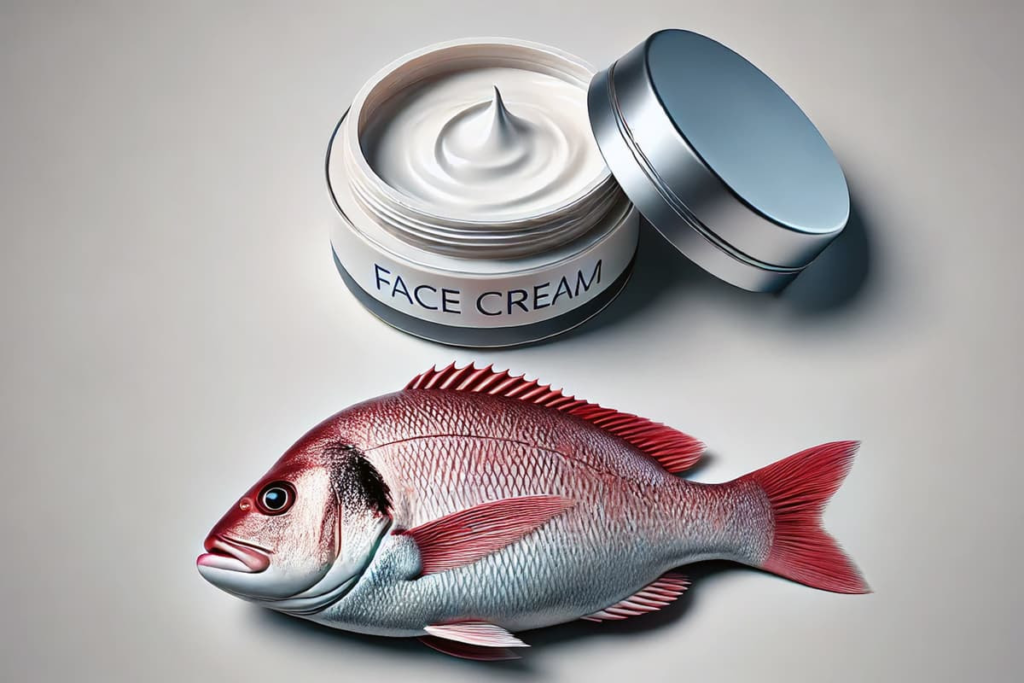Health & Wellbeing
By Paul McClure
September 06, 2024

Bacteria in the guts of some species of seabream have anti-aging propertiesDALL-E
You might soon be buying anti-aging skincare products containing fish guts, thanks to a new study that found that the innards of two species of seabream possess compounds that fight wrinkles and age spots.
There are some pretty freaky skincare ‘treatments’ out there that are designed to keep your youthful looks. You can get a leech facelift, which involves letting the creatures bite your face to “fill it with radiance afterwards”. How about the “myriad of anti-aging effects” provided by a snail trail facial? If that doesn’t grab you, you can always look to rid yourself of wrinkles by setting fire to an alcohol-soaked towel while it’s on your face.
Given what’s already available, the fact that researchers from Sungkyunkwan University in Seoul, South Korea, discovered that the bacteria found in fish guts can inhibit the effects of skin aging should come as no surprise.
But, scoffing aside, many natural products have been important sources of new drugs. Indeed, almost half (49.2%) of the drugs approved by the US Food and Drug Administration (FDA) between 1981 and 2019 were either natural products themselves or related to natural products. And fish have already proven to be a source of important, health-promoting components.
Aware that the majority of potentially helpful metabolites produced by living organisms are still unknown, for the present study, the researchers went searching for some in the guts of two species of fish, the red seabream (Pagrus major) and the blackhead seabream (Acanthopagrus schleglii). Specifically, they examined the metabolites produced by bacteria living in these fishes’ guts.
They isolated 22 compounds from two fish-gut-derived bacteria and investigated the effect of each one on the enzymes collagenase and tyrosinase, which are associated with wrinkle formation and skin pigmentation, respectively.
The overactivity of the skin enzyme collagenase can degrade collagen, which is a major factor in the loss of skin elasticity and thickness and contributes to skin aging and the formation of wrinkles. Hyperpigmentation – sometimes called age spots, sunspots or liver spots – can result from internal and external factors, such as hormone levels and UV exposure, and contributes to skin aging. The enzyme tyrosinase is involved in the production of melanin, which determines skin color. Excessive melanin causes hyperpigmentation in aged skin.
The researchers found that two compounds strongly inhibited collagenase activity in mouse cells by more than 30% without causing any toxic damage to the cells. In addition, three compounds demonstrated skin-brightening properties due to their ability to inhibit tyrosinase activity. One of the compounds exhibited a 13.7% inhibition rate of tyrosinase activity, which was larger than the other two (6.7% and 1.8%). The collagenase- and tyrosinase-inhibiting activity was stable under heat (50 °C/122 °F) and UV light for up to six days.
Based on their results, the researchers concluded that these compounds were promising anti-wrinkle and skin-brightening agents that could be added to future cosmetic products.
The study was published in the journal ACS Omega.
Source: American Chemical Society (ACS)

Leave a Reply